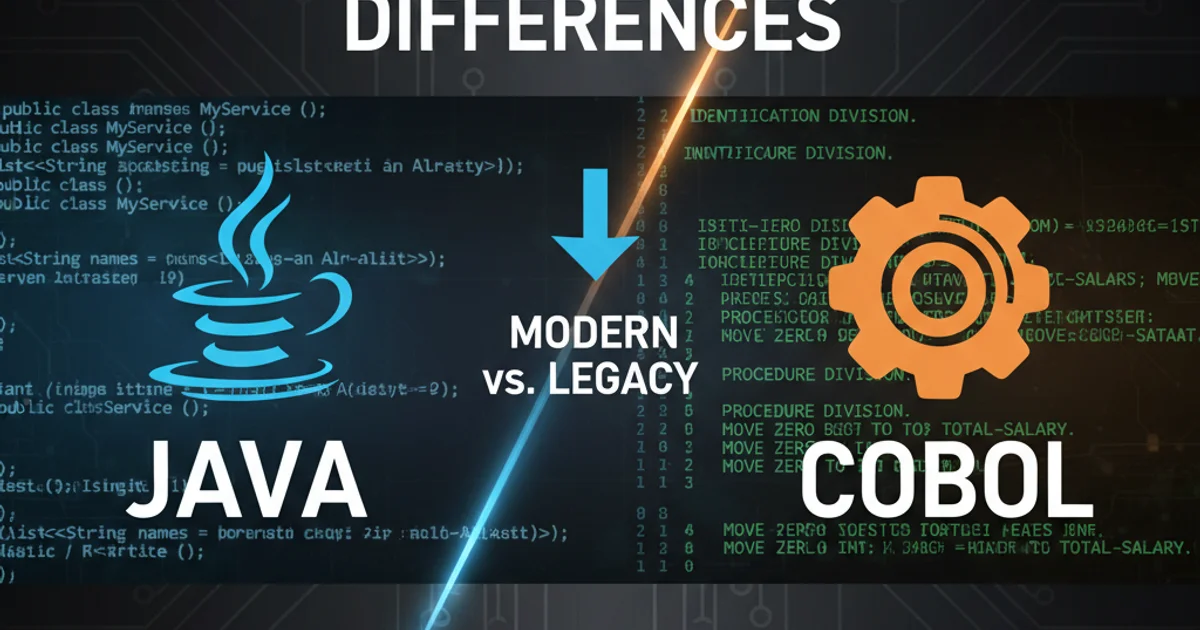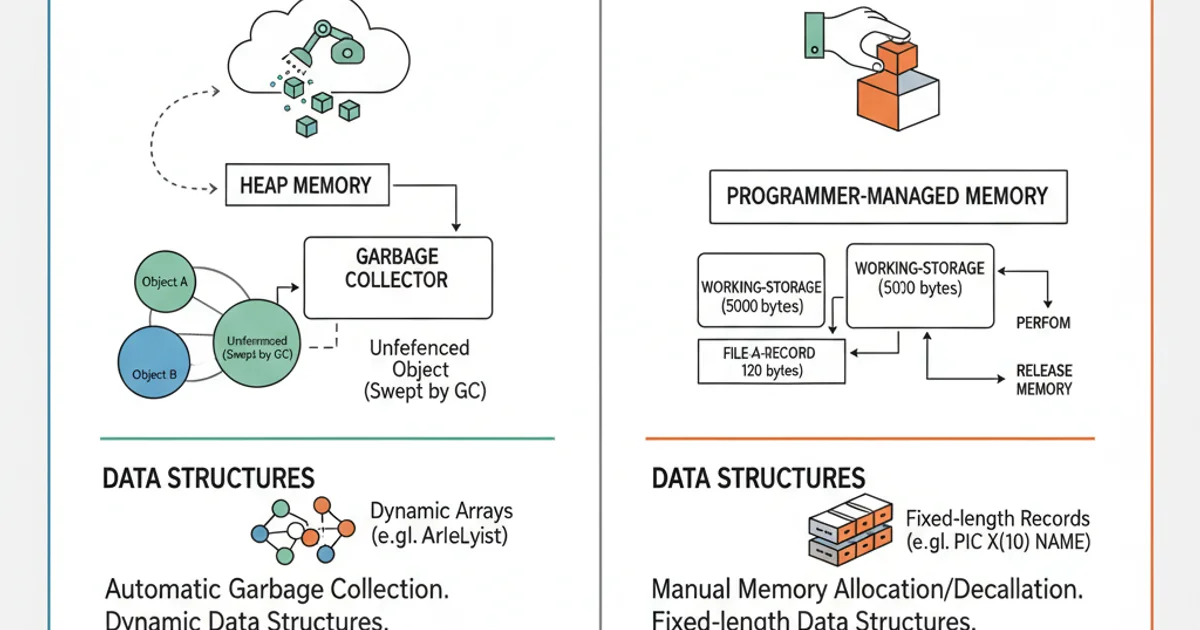Java and Cobol differences
Categories:
Java vs. COBOL: A Deep Dive into Modern and Legacy Programming

Explore the fundamental differences between Java and COBOL, two influential programming languages, and understand their respective strengths, use cases, and impact on enterprise systems.
In the vast landscape of programming languages, Java and COBOL stand as titans from different eras, each with a profound impact on software development. Java, a cornerstone of modern enterprise applications, web services, and mobile development, champions object-oriented principles and platform independence. COBOL, on the other hand, is a venerable language that has powered critical business operations for decades, particularly in finance and government. Understanding their distinctions is crucial for developers, architects, and IT professionals navigating legacy modernization, system integration, and new application development.
Architectural Paradigms and Execution Environments
The core differences between Java and COBOL begin with their fundamental architectural paradigms and how they execute code. Java is an object-oriented, class-based language designed for 'write once, run anywhere' (WORA) capability, thanks to the Java Virtual Machine (JVM). COBOL is a procedural, data-oriented language primarily designed for batch processing and transaction handling on mainframe systems. Its execution is typically compiled directly to machine code for specific hardware, or sometimes to an intermediate code for COBOL runtimes.
flowchart TD
A[Java Development] --> B{Compile to Bytecode}
B --> C[JVM Execution]
C --> D[Platform Independent Application]
E[COBOL Development] --> F{Compile to Machine Code}
F --> G[Mainframe Execution]
G --> H[Platform Dependent Application]Comparison of Java and COBOL Compilation and Execution Flows
public class HelloWorld {
public static void main(String[] args) {
System.out.println("Hello from Java!");
}
}
IDENTIFICATION DIVISION.
PROGRAM-ID. HELLO.
PROCEDURE DIVISION.
DISPLAY 'Hello from COBOL!'.
STOP RUN.
Data Handling and Memory Management
Data handling and memory management represent another significant divergence. Java employs automatic garbage collection, abstracting memory management away from the developer. It uses strong typing and a rich set of data structures. COBOL, conversely, requires manual memory management and is renowned for its precise control over data layout and fixed-length records, which are crucial for efficient file processing and database interactions on mainframes. Its PIC clauses define exact data formats, a level of detail rarely seen in modern languages.

Java's automatic memory management simplifies development, while COBOL's explicit data definitions offer granular control.
class Customer {
String name;
int id;
double balance;
public Customer(String name, int id, double balance) {
this.name = name;
this.id = id;
this.balance = balance;
}
}
01 CUSTOMER-RECORD.
05 CUSTOMER-NAME PIC X(30).
05 CUSTOMER-ID PIC 9(07).
05 ACCOUNT-BALANCE PIC S9(09)V99 USAGE COMP-3.
Ecosystem, Concurrency, and Modernity
Java boasts a vast, vibrant ecosystem with extensive libraries, frameworks (Spring, Hibernate), and tools for web, mobile, and distributed computing. It supports multi-threading natively for concurrent processing. COBOL's ecosystem is more specialized, focused on mainframe environments, batch processing, and integration with legacy databases like VSAM or DB2 on z/OS. While modern COBOL compilers offer object-oriented extensions and interoperability features, its primary strength remains in maintaining and evolving existing mission-critical systems rather than greenfield development for cloud-native or microservices architectures.
graph TD
A[Java] --> B(Modern Ecosystem)
B --> C{Web Services}
B --> D{Mobile Apps}
B --> E{Cloud Native}
A --> F(Concurrency: Multi-threading)
G[COBOL] --> H(Legacy Ecosystem)
H --> I{Mainframe Batch}
H --> J{Transaction Processing}
H --> K{VSAM/DB2 Integration}
G --> L(Concurrency: Job Scheduling/TP Monitors)Ecosystem and Concurrency Models: Java vs. COBOL